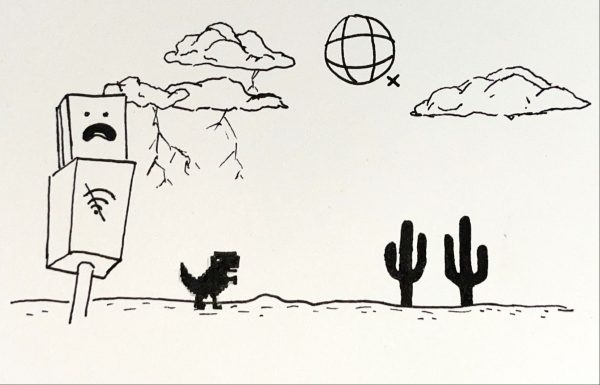A look at the role Web is playing in the Star newsroom
February 22, 2007
I’ve avoided talking about the Internet directly for some time now, but a few recent articles concerning that very thing have caught my eye. The first was an article talking about how the New York Times is restructuring its newsroom to cover the 2008 presidential election.
In essence, one central desk will coordinate coverage for the paper’s print edition and Web site. This is generally not a standard practice among large-scale newsrooms – the Washington Post, for example, has separate staffs and facilities for its print edition and Web site. This policy has received much criticism, but I don’t want to speculate on what works or doesn’t for that particular organization.
The second item of interest was an article discussing the future of video on news organizations’ Web sites. Many papers’ sites have had video on them for about a year now – with mixed results.
The problems that some papers are having, and what this article touched on, have to deal with the quality and availability of their video content.
Some critics feel that having reporters produce these segments from the field is ineffective – some people translate well to video and have a strong on-screen presence and some don’t.
Additionally, critics also argue that the substance of these videos is little more than the reporter’s print edition story rehashed. In this saturated age of YouTube, however, some feel these videos surpass 24-hour news networks in their usefulness.
I would be remiss without explaining how the Star fits into the equation when it comes to online presence and these topics. The Star has operated a Web site since about 1996, at the advent of the Internet era.
It reached the height of its success to date in about 2001, when it received the National Online Pacemaker Award from the Associated Collegiate Press for two years in a row. It also won Best College Newspaper Online Service from Editor & Publisher magazine in 2002.
Since then, the Internet’s landscape has changed dramatically in a relatively short period of time. This change has affected all news organizations, but I think college publications have felt the most ambiguity because of it when it comes to their online presence.
The medium provides many more opportunities to advance journalistic practices using new media than do print products, considering a paper can do more than just reprint all of its content from the current day’s issue.
The ultimate goal of a paper’s Web site is to generate additional revenue for the organization, but a model of success has yet to be found.
That said, the paper is attempting to branch out with new ideas for its Web site. A recent agreement between the Star and the Northern Television Center allows NTC video segments to be rebroadcast on the Star’s site. Packages produced in-house also air there occasionally as well.
Only about five to six positions focus exclusively on the Web product right now, compared with about 200 overall that work to produce the print edition.
A certain amount of ambiguity still exists for the site, mostly because everyone on the staff still speculates on what should go there.
The bottom line with online video, however, and news Web sites in general is that there are no rules to break nor guidelines one must follow. This means that we could be in an extraordinarily exciting time or an alternately terrifying one.













